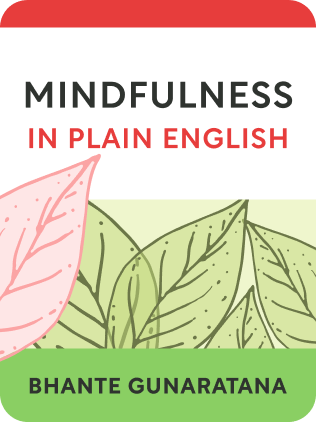

This article is an excerpt from the Shortform book guide to "Mindfulness in Plain English" by Bhante Gunaratana. Shortform has the world's best summaries and analyses of books you should be reading.
Like this article? Sign up for a free trial here .
Do you want to deepen your mindfulness meditation practice? What are some ways you can integrate mindfulness into your everyday life?
The ultimate goal of meditation is to be present in every waking moment, extending mindfulness into everyday life. Sitting meditation is merely practice for this ultimate goal, instilling new habits.
The following exercises will help you to develop everyday mindfulness, extending it beyond your formal meditation practice.
Cultivating Everyday Mindfulness
It’s essential to apply effort to connect mindfulness meditation with the rest of your existence. Otherwise, what’s the point if you feel at peace during meditation but return to the real world with anger?
To this end, practice going into the state of mindfulness when doing everyday activities – walking, drinking tea, breathing, waiting. With time, you will pleasantly find that you’re meditating without thinking about it – driving down the freeway or brushing your teeth.
The below exercises allow you to practice little bits of mindfulness outside the sitting meditation.
1) Walking Meditation
Sitting meditation is by nature still, but conscious life is all about motion. To translate mindfulness practices over into your everyday life, try practicing meditation while walking slowly.
Here’s how to do it:
- Find a secluded place where you’ll be free from observation and be able to take 5-10 steps in a straight line.
- At one end, stand attentively for one minute. Hands can be held in front, back, or at your sides.
- Then, while breathing in, lift the heel of one foot. While breathing out, rest that foot on its toes. Repeat.
- After reaching the other side, turn around, pause one minute, then repeat.
- Observe the sensations of taking a step – lifting, swinging, coming down, touching, pressing. Register every nuance of the movement. Don’t think about the sensation or the concept of feet.
2) Postures
For a few seconds periodically, examine your body from head to toe. How is your body arranged? How are you holding it? What is sore? What else do you feel?
The purpose is not to correct your posture or admonish yourself for having bad posture. Instead, it’s a break from the day.
3) Slow-Motion Activity
Slow down an everyday activity to 10x the time it normally takes to complete. Witness every single component of the action, pay full attention to every nuance.
For example, if you are sitting and drinking tea:
- Note your posture as you sit
- Feel the handle of the cup in your fingers
- Smell the aroma of the tea
- Note the placement of the cup, the tea, your arm, the table
- Watch the intention to raise your arm within your mind
- Feel your arm as it rises
- Feel the cup against your lip
- Feel the liquid pouring into your mouth.
Do the same with your thoughts, words, and movements.
4) Breath Coordination
When moving, coordinate the activity with your breathing. (Walking, biking, cleaning, etc). This lends a flowing rhythm to your movement and smooths out transitions.
5) Stolen Moments
Do you feel you have any periods of wasted time in your day? When you feel bored?
Turn every spare moment into meditation. Be alert and aware throughout the day. What are you feeling at the moment? Why?
Examples – while waiting at the doctor’s office; in line at the supermarket; while doing menial labor.
6) Concentration on All Activities
Aim for the situation where there is little difference between seated meditation and the rest of life. You’re supposed to be meditating all the time. If you are angry, meditate on the anger. Explore the mechanics of anger. Any stimulus can kick off a return to mindfulness.
As you gain the ability to clearly comprehend life’s activities outside of sitting meditation, you gain the equanimity and perspective from meditation throughout all of life.

———End of Preview———
Like what you just read? Read the rest of the world's best book summary and analysis of Bhante Gunaratana's "Mindfulness in Plain English" at Shortform .
Here's what you'll find in our full Mindfulness in Plain English summary :
- How to practice mindfulness daily
- How to recognize emotions as they arise
- Why you have to let go of emotions for peace






